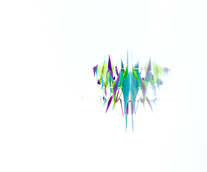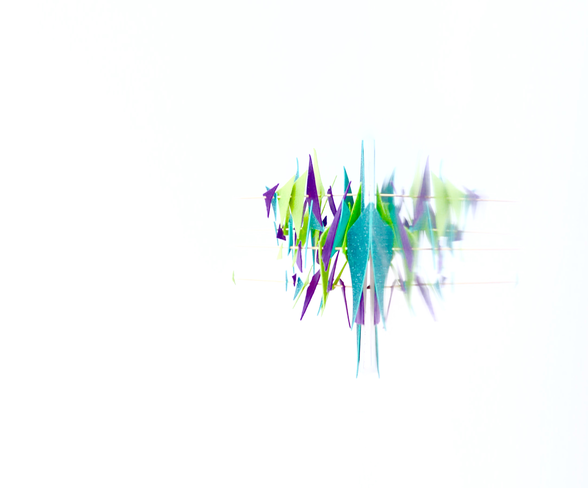Videos of the installed outcomes following:
weS.A.N.K. Tokyo : 16 – 18.11.2017 at Tokyo Arts and Space / 24 prototypes
weS.A.N.K. Paris : 28 – 30.1.2018 at Mains d’Oeuvres Saint-Ouen / 17 prototypes
weS.A.N.K. Helsinki : 2 – 4.3.2018 at Performing Arts Lab (Etlab) / 44 prototypes
weS.A.N.K. Barcelona : 16 - 18.6.2018 at Institut del Teatre / 56 prototypes
weS.A.N.K. Daegu : 30.6 - 2.7.2018 at PSi#24 Conference- Daegu Art Factory / 19 prototypes
weS.A.N.K. Collaborative Sessions
1. Description
Via five collaborative sessions, in Tokyo, Paris, Helsinki, Barcelona and Daegu, the weS.A.N.K. research project's hosts, together with artists and architects invited locally, carried out, during three days, the performative design and production of "prototypes of the Stage of the Future", engaged in their critical discussion, and displayed a public outcome at the end of each session.
From general themes – including stage, architecture and time ecology, big data and post-industrial landscapes, dystopian narratives and daily rituals, networks, climate, memory, energy and affect... – the spontaneous design and manufacture of prototypes sought to explore our techno-sensitive and geographical conditions and, from this perspective, to coalesce physical and informational objects with a scenic dimension.
At the crossroads of theatrical exploration and architectural research, the collaborative session develops simultaneously on two levels: that of the design of prototypes, according to an artistic-research-oriented protocol combining theoretical interventions, manufacturing, writing and installation; and that, both below and beyond the first, of the search for a possible performativity of the whole project.
Working on interstices and margins, testing the disciplinary limits while resisting the temptation of their disintegration, the sessions gathered artists (performing arts, scenography and visual arts) and architects whose practice is characterized by an interrogation on the conditions of its own existence and by exploring the limits of their medium.
2. Methodology
Every weSANK collaborative session followed the same methodology.
a. Invitations / Inputs
Personal invitations were sent to local artists and architects of the location of each session. They were selected for the speculated resonance between their practice/research and the weS.A.N.K. project.
Before the session, each participant who accepted the invitation was invited to familiarize her/himself with the project by reading the project inaugural text “Considerings”.
Participants received no access to previous session archives; no visual or textual traces of prototypes realized during an anterior edition were sent beforehand.
Each participant was invited to prepare a 20’ to 30’ presentation/exposition of her/his practice/research.
b. Experimental protocol
During the three days (1) of each session, the same protocol for realizing the prototypes is followed:
Hosts and guests have a pre-scheduled slot during the session for communicating their prepared presentation on their research/practice.
Every cycle of prototyping starts with a presentation. There is as many cycles as participants in the session.
A prototyping cycle:
- Starts with a presentation by a host or a guest (2)
- Once a presentation ends, instead of entering into a theoretical conversation, the participants are invited to respond by the making of a prototype, at the intersection of the just attended presentation, their own research/practice and the text “Considerings”. This phase of materializing the prototype lasts 30 minutes maximum (the hosts call them Fast Prototyping Sessions)
- After the 30' of "making", a short introduction of each just-made prototype is performed by her/his prototyper (few minutes).
- Then each prototyper is invited to give a title and to write a description of the prototype (the material / nature of the prototype, its modalities : how does it “work”, how does it function as a stage? as a deep(ened) stage? and who, where and when is its spectator?...) during the next twenty minutes.
- After the "writing", participants are invited, but this is not mandatory, to share their production through an informal reading circle, before starting a new prototyping cycle.
- Finally, on the afternoon of the last day of the session, the group takes few hours to put together all the prototypes (objects and texts) realized during the three days and to assemble them into an installation, which is opened to the audience to share, discuss and celebrate the session with a drink.
(1) All guests of Paris and Daegu sessions couldn't participate during the full three days, that is the reason why the number of prototypes realized in those two editions is lower than the ones made during the three other sessions.
(2) On the first day, Emmanuelle and Vincent, the hosts, go first with the presentations of their own research/practice in relation to the weSANK project (about an hour each), in order to set the experimental and rethorical frameworks of the whole project, and of the session. Then the guests are invited to give their presentations during next two days.
c. Material resources
For each session, the hosts provide the raw material to make the prototypes. The supplied matters have the raw quality of the materials that can be found in architecture, scenography or visual arts workshops, a kind of material used to make models easily and quickly. Pieces of wood, chunks of cardboard, rolls of paper, plexiglas, foams, rubber etc ... The supplied materials are either new or residual, and are accompanied by tools and assembly materials such as glue, rubber bands, threads and wires, etc. ... These raw materials are similar for each session, but with slight geographical and cultural variations. Certain qualities of materials are deliberately recurrent such as reflective/diffracting materials and neon colors. The will of the hosts being to critically evoke at the same time the modernistic quality of the fast and cheap model and a certain belonging to a contemporary aesthetic qualified as post-digital, or as post-internet. As for the quantity, the sessions begin with a rather generous quantity of materials; however, participants are informed immediately that no material will be added to the stock during the three days of prototyping. Thus a particular economy is established from the beginning of each session, that of the prospect of a factory that depends on a progressive depletion of resources.
d. Public installed outcome
At the end of each session, open-doors are organized and the audience is invited to enter the prototyping atelier in its raw state of “end of the session”. The audience discovers the prototypes made during the past three days, via two quantities: on the one hand the prototypes-objects, assembled next to each other on tables or on the floor and, on the other hand, the prototypes-texts, either printed and pinned on the wall, or available on file, or scrollable on a computer screen, screen possibly videoprojected on a wall of the studio. The two produced quantities are given to see / read "as such", raw, "just-out of the factory", that is to say, without treatment, without hierarchization, without composition, and without linking between them. Objects and texts are thus dissociated and their apprehension proceeds from a logic of landscape, unprocessed data mass, and collectiveness. Following this logic, objects and texts are not assigned to their author, but present themselves as a common production. All the participants of the session are however named, which allows to establish an identity of the production between communality, heteronomy and signature. Videoprojections is added to the installation from Helsinki session on. In Helsinki a video of a river in the melting is projected, in Barcelona a video of the Tokyo outcome installation in fixed shot and a video from Roumagnac's triptych "Backdrop (Japan) are projected, and finally in Daegu a video of the Helsinki installation in fixed shot is projected. The text "Considerings" is also available in situ.
e. Archives/Exposition
After each session, the prototypes are archived, as part of the project exposition, on the Research Catalogue. Here, unlike the landscapist logic of the after-session installed outcomes, each prototype-object is associated with its prototype-text - except in the case of the archiving of the Barcelona session, which reproduces the logic of not classified quantity, in order to reproduce this experience of mass, at least once, in the exposition. The lay-out of each session archive is different. This diversity shows the interest of the exposers to consider the RC as an experimental and playful platform. In addition to the archives of the 161 prototypes, are added: the text "Considerings", as well as five photographs documenting five performances of the latter, five videos in fixed shot of installed outcome (in the section The Sessions), a series of about fifty photographs, making-of type (in the section The Guests). Finally will be added an audiovisual documentation and an exegetic conclusive text by Roumagnac and Chiappone-Piriou, after the final restitution of the project in Helsinki in November 2018.

